Jingdezhen, heaven for ceramic lovers
Rarely will you find a place like Jingdezhen, where almost every aspect of it is tied so closely to a form of art. For this small city in northeastern Jiangxi Province reputed as China’s “capital of ceramics,” ceramics is one of its pillar industries, the theme of its best known scenic spots, the major that makes local universities stand out among their national peers, and what attracts artists from home and abroad to settle there. Even the city’s name, meaning “Jingde Town” in Chinese, is not unrelated to ceramics — formerly a town known as “Fuliang,” it was renamed “Jingde” by the Jingde Emperor of the Northern Song Dynasty (960-1127) as the emperor had a penchant for the ceramic ware produced there.
For tourists that are looking for modernity, technologies and “stuff,” Jingdezhen is a bad choice; for those who are looking for history, culture, art and more specifically, ceramics, it is heaven. For those who feel like Jingdezhen is a destination of choice, here are some recommendations summarized from my recent weeklong trip, of what to see and what to do there.
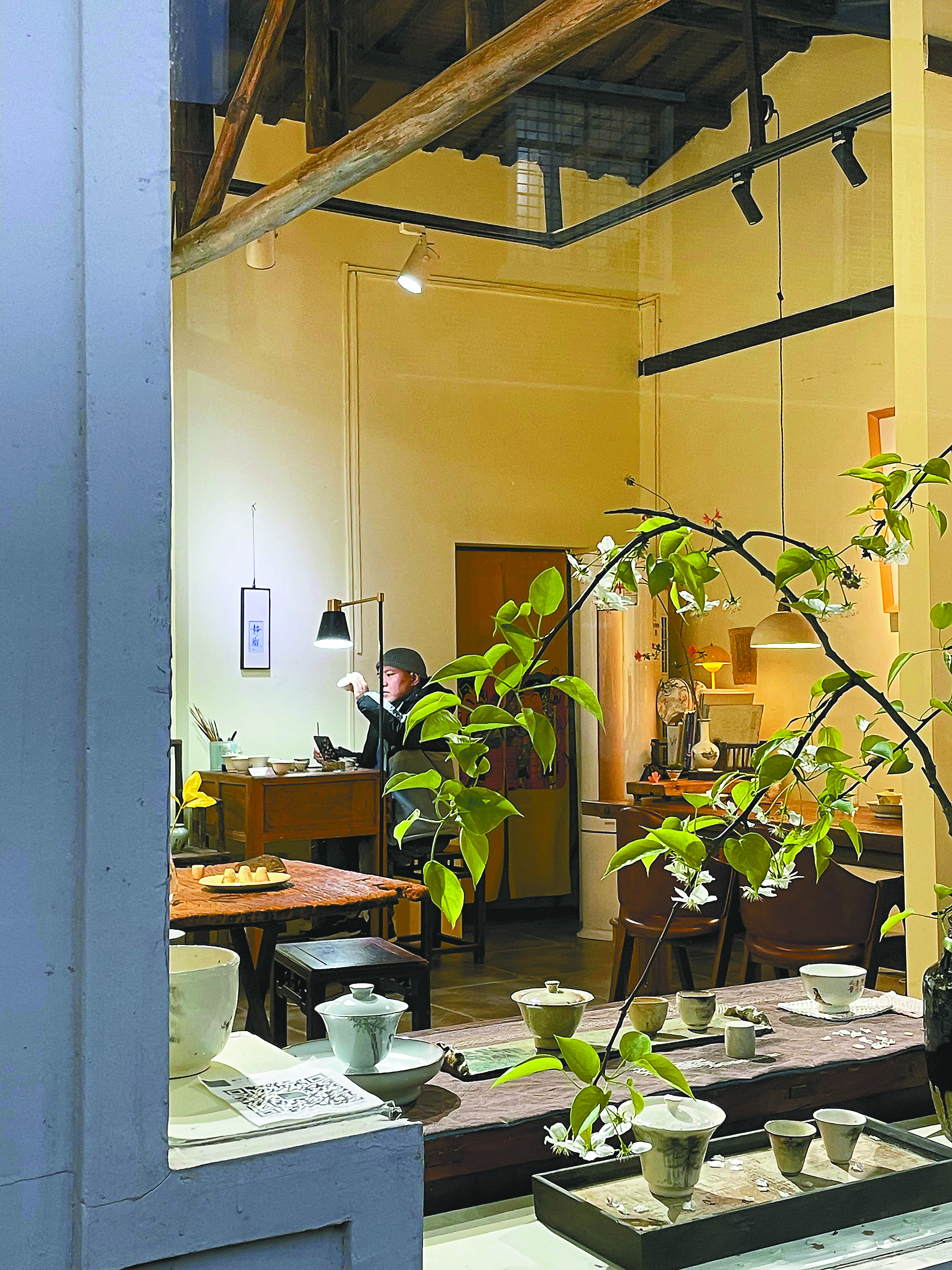
A man is studying a ceramic piece in his studio on Sanbao Road.
Ceramics markets
If your stay in Jingdezhen spans a weekend, don’t forget to include on your schedule at least a few hours in a ceramics market. These markets are the best place for a treasure hunt of distinctive ceramic pieces created by young artists, usually students of local universities.
The Taoxichuan Creative Market (陶溪川创意市集), held from 3:30 p.m. to 9:30 p.m. every Friday to Sunday at the Taoxichuan Cultural and Creative Block (陶溪川文创街区) in the city center, is top on my list. Several dozens of stalls that line both sides of the block’s main streets form a treasure trove where you easily forget the passing of time as you visit stall after stall, marveling at the beauties created by clay and fire. As many of the ceramic pieces are one of a kind, it is natural that their prices are higher than run-of-the-mill pieces. Don’t feel shy to bargain for a discount with their designers if you feel the price is slightly over your budget, and remember to ask them to send your purchases to your home via express service to free yourself from the worry of breaking them during the trip.
An equally popular market is the Letian Creative Market (乐天创意市集) held in the Factory of Ceramic Statues (雕塑瓷厂), which I didn’t have a chance to experience this time, as it is only there each Saturday morning. Though smaller in size than the Taoxichuan Creative Market, this one is said to be where you can find ceramic artists whose works are bolder and more imaginative. Consider a visit if you have a Saturday morning free; it must be full of fun.
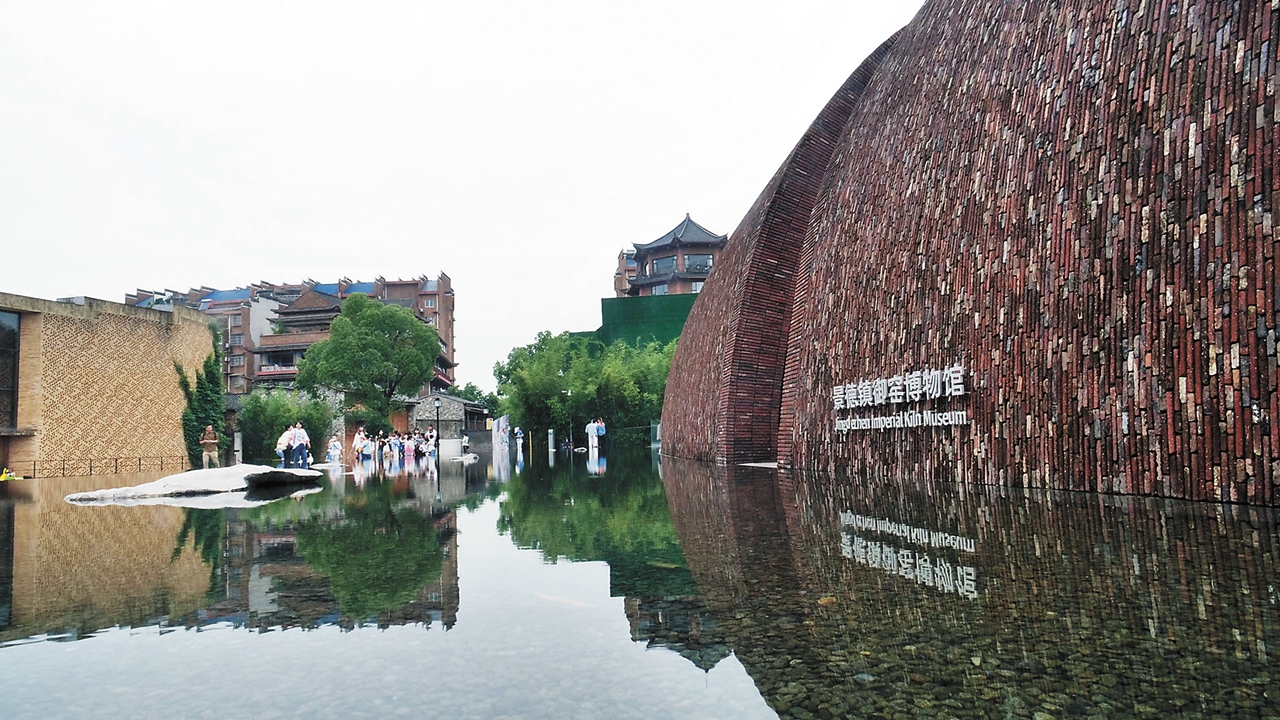
The Imperial Kiln Museum has won multiple architecture awards. Xinhua
Museums
While the bustling ceramics markets give you a glimpse of the vitality of the ceramic artist community in Jingdezhen, through the city’s museums you can get a broader picture of how the history of ceramics and Jingdezhen are intertwined to shape each other. If you have time for just one, it must be the China Ceramics Museum (中国陶瓷博物馆). With its rich exhibits organized in chronological order, this is the perfect place to learn about how ceramic-making techniques evolved and Chinese people’s aesthetic taste for ceramics changed over time. For a better understanding of each exhibition area and their key exhibits, it is recommended that you rent an audio guide.
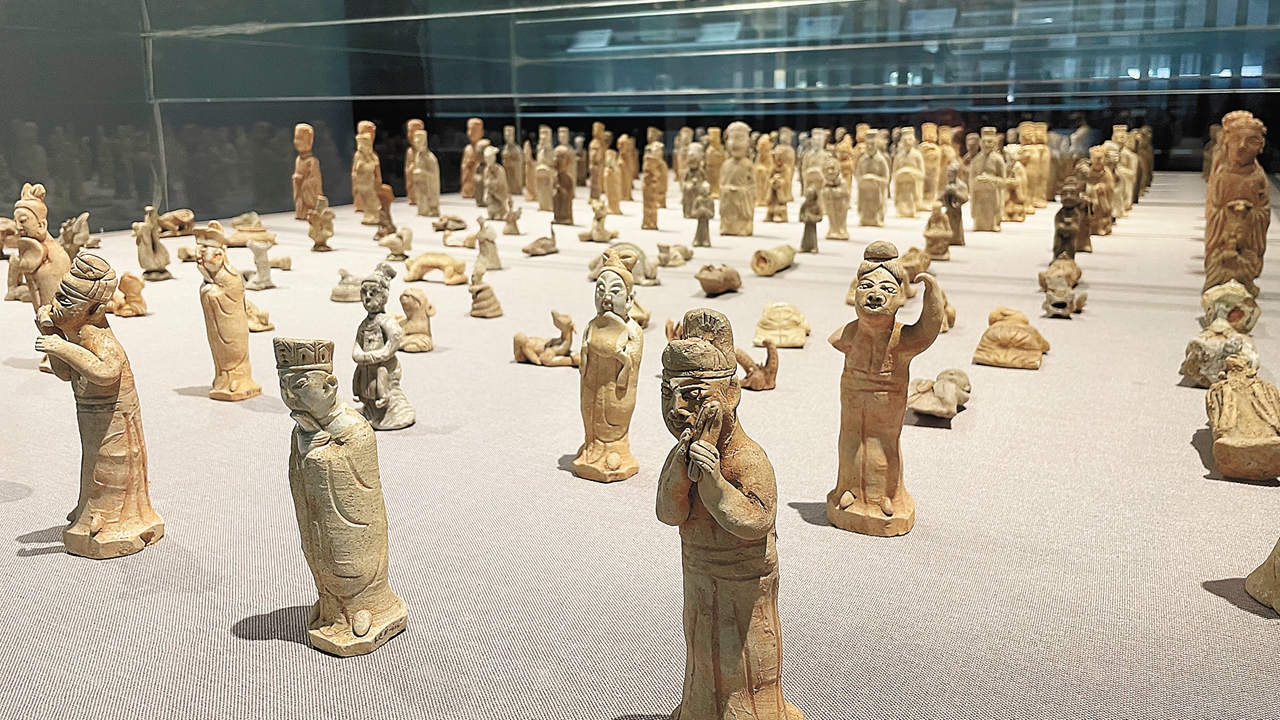
Terracotta figurines dating back to the Northern Song Dynasty are exhibited at the China Ceramics Museum. Photos by Yu Yuanfan unless otherwise stated
Another museum worthy of a visit is the Imperial Kiln Museum (御窑博物馆) situated within the Imperial Kiln Scenic Area. A winner of multiple domestic and international architecture awards, the museum, whose appearance was inspired by ancient kilns, is itself worthy of beholding. Built near the site of the imperial kiln of the Ming Dynasty (1368-1644), the museum’s exhibits are mainly ceramic ware restored from archaeological findings, as it was mandatory for all ceramic pieces produced in the kiln but not chosen to be used as the imperial family’s utensils to be destroyed. Incomplete as those exhibits are, they tell the story of Jingdezhen and ceramics from a different perspective.
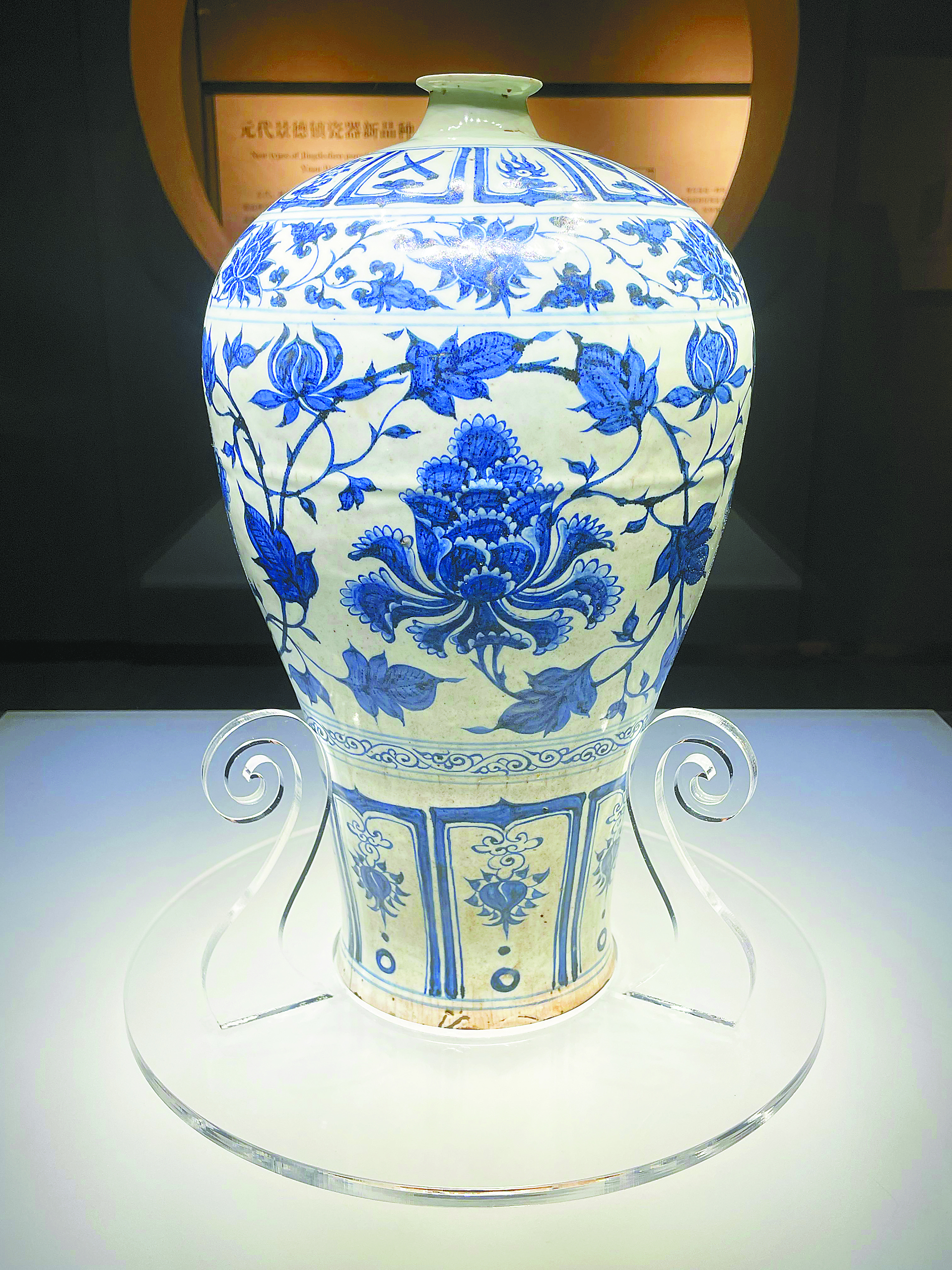
A rare blue-and-white vase in the collection of the China Ceramics Museum dates back to the Yuan Dynasty (1271-1368)
In addition to comprehensive museums, Jingdezhen also abounds in art museums. Two of my favorites are the Sanbaopeng Art Museum (三宝蓬美术馆) in Sanbao Village, which featured a series of ceramic paintings by female artists when I visited, and the Central Academy of Fine Arts (CAFA) Art Museum of the Ceramic Art Institution (中央美术学院陶瓷艺术研究院美术馆) in the Taoxichuan Cultural and Creative Block, which, as its name indicates, mainly displays the works of CAFA students.
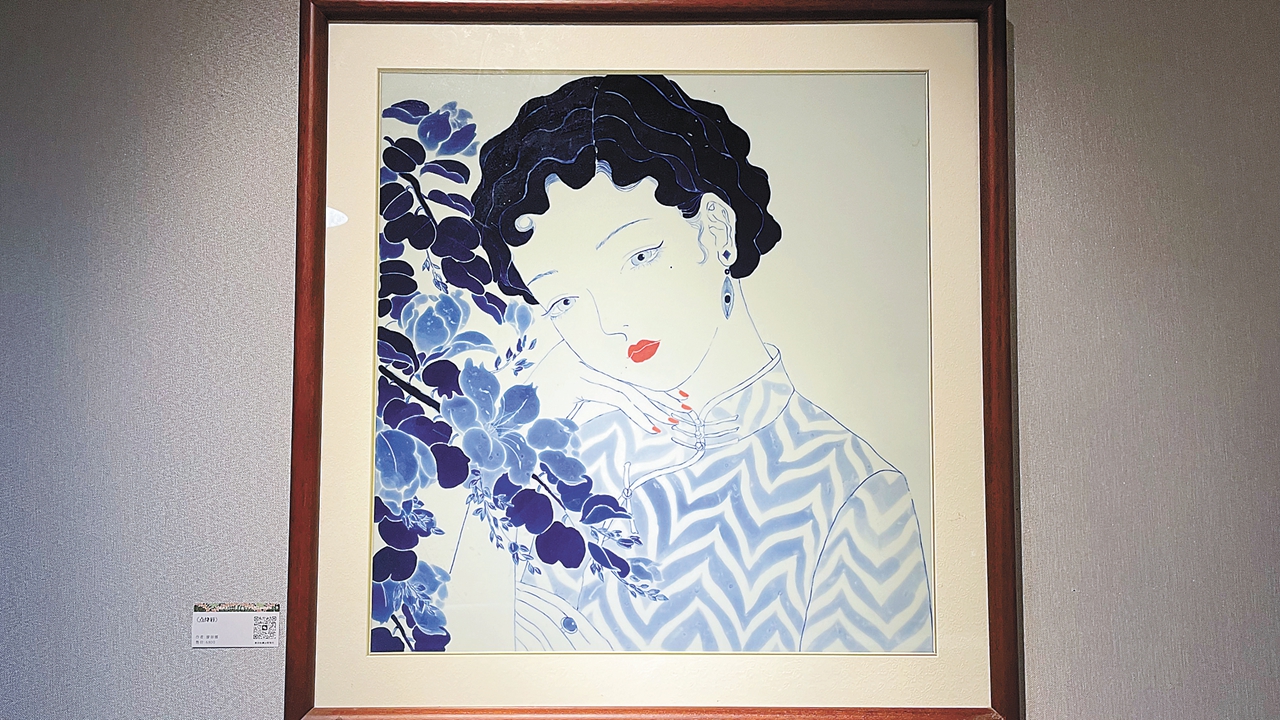
A ceramic painting by a female artist on display at Sanbaopeng Art Museum.
Ceramics retail blocks
Ceramic shops in Jingdezhen usually come in clusters, a time-saver for tourists who try to pack as much as possible into their itineraries. The Factory of Ceramic Statues and the Taoxichuan Cultural and Creative Block, where Jingdezhen’s two most popular ceramics markets are held, are both home to several dozens of ceramic shops. But the cluster that impressed me most was Sanbao Road, whose sides are lined with hundreds of two- or three-story ceramic studios. Some of the shops in these clusters offer ceramic-making sessions for people who wish to make something out of clay with their own hands. You are recommended to book in advance as many such services are fully booked, especially during weekends and holidays.
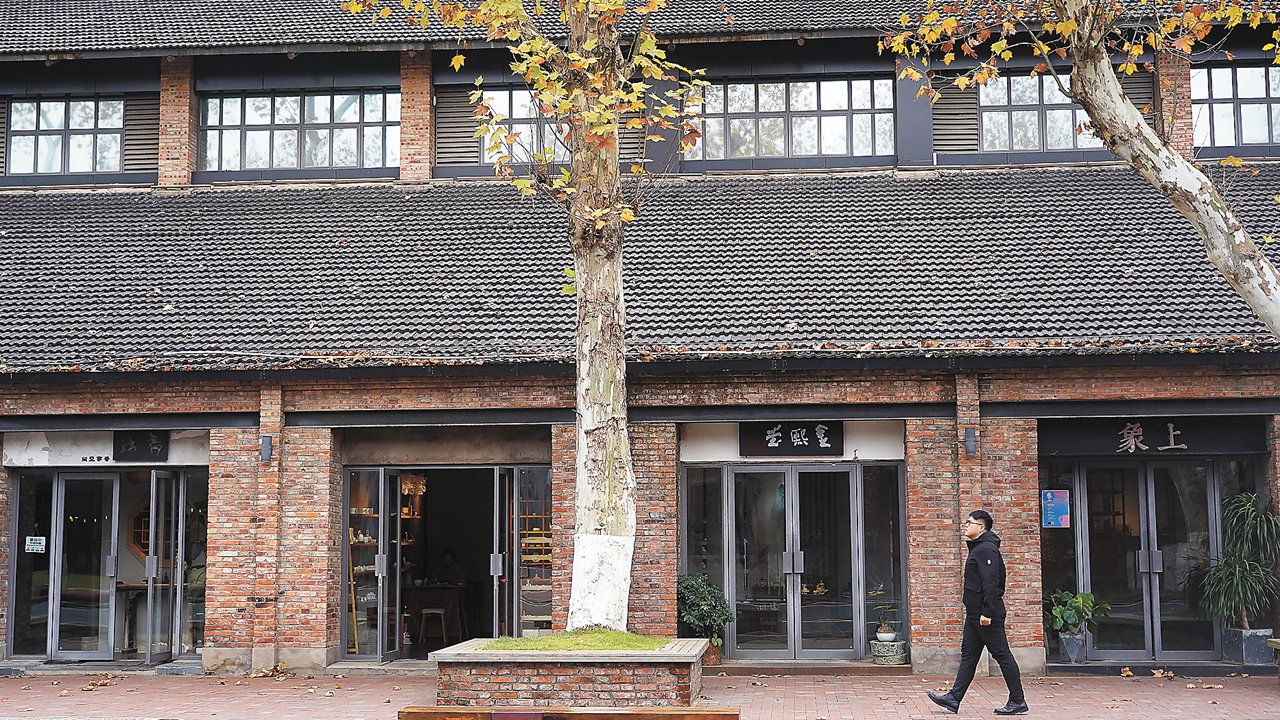
A passer-by is seen in the Taoxichuan Cultural and Creative Block. Xinhua